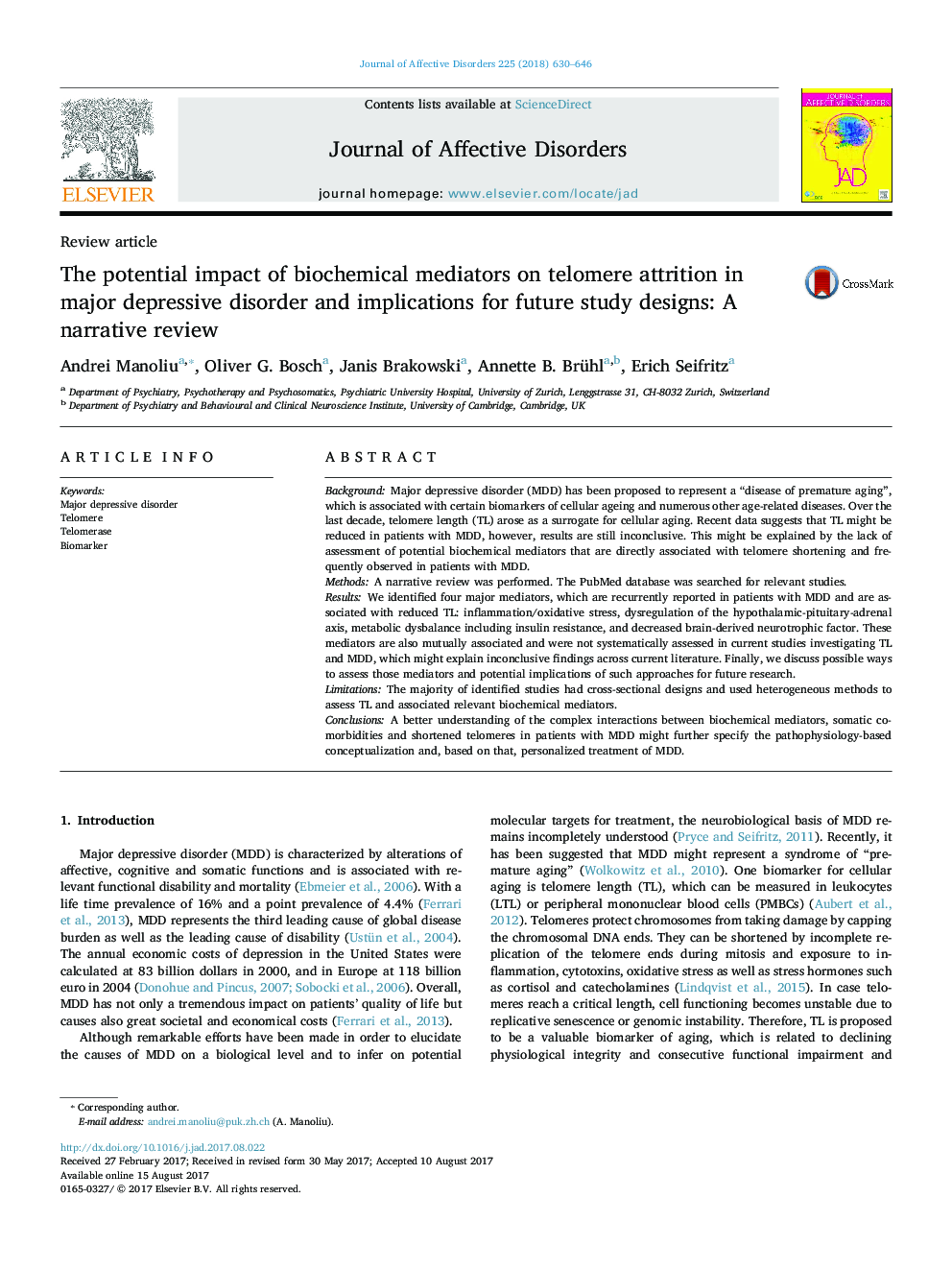| کد مقاله | کد نشریه | سال انتشار | مقاله انگلیسی | نسخه تمام متن |
|---|---|---|---|---|
| 5721770 | 1608100 | 2018 | 17 صفحه PDF | دانلود رایگان |
- Telomere attrition in MDD might be caused by biochemical mediators.
- Inflammation, HPA-axis, metabolic dysbalance and BDNF might represent such mediators.
- We review the current literature with regard to major biochemical mediators.
- We propose how to assess those mediators in studies investigating telomere length.
- Our findings might further specify the pathophysiology-based conceptualization of MDD.
BackgroundMajor depressive disorder (MDD) has been proposed to represent a “disease of premature aging”, which is associated with certain biomarkers of cellular ageing and numerous other age-related diseases. Over the last decade, telomere length (TL) arose as a surrogate for cellular aging. Recent data suggests that TL might be reduced in patients with MDD, however, results are still inconclusive. This might be explained by the lack of assessment of potential biochemical mediators that are directly associated with telomere shortening and frequently observed in patients with MDD.MethodsA narrative review was performed. The PubMed database was searched for relevant studies.ResultsWe identified four major mediators, which are recurrently reported in patients with MDD and are associated with reduced TL: inflammation/oxidative stress, dysregulation of the hypothalamic-pituitary-adrenal axis, metabolic dysbalance including insulin resistance, and decreased brain-derived neurotrophic factor. These mediators are also mutually associated and were not systematically assessed in current studies investigating TL and MDD, which might explain inconclusive findings across current literature. Finally, we discuss possible ways to assess those mediators and potential implications of such approaches for future research.LimitationsThe majority of identified studies had cross-sectional designs and used heterogeneous methods to assess TL and associated relevant biochemical mediators.ConclusionsA better understanding of the complex interactions between biochemical mediators, somatic comorbidities and shortened telomeres in patients with MDD might further specify the pathophysiology-based conceptualization and, based on that, personalized treatment of MDD.
Journal: Journal of Affective Disorders - Volume 225, 1 January 2018, Pages 630-646
